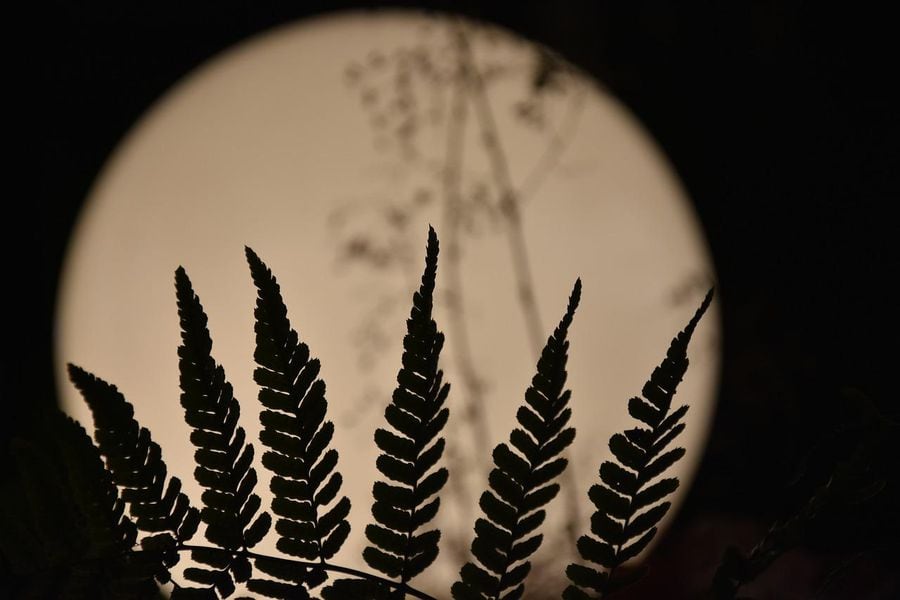For the first time in history, scientists were able to grow plants on lunar soil

In a new article published in the magazine Communication biologyand researchers from University of Florida (UF), United States, They showed that plants can successfully germinate and grow on lunar soil. Their study also looked at how plants respond biologically on the surface of the moon Also known as lunar regolith, which is fundamentally different from the soil on Earth.
this work It is the first step towards one day growing plants for food and oxygen on the moon or during space missions. This search happens instantly When the Artemis program plans to return humans to the moon.
“Artemis will require a better understanding of how to grow plants in space,” She said Rob Ferrellone of the study’s authors and Distinguished Professor of Horticultural Sciences at the UF Institute for Food and Agricultural Sciences (IFAS).
He noted that even in the early days of lunar exploration, plants played an important role. Anna Lisa PaulAnd Also one of the study’s authors and a research professor of horticultural sciences at UF/IFAS.
“Plants helped prove it Soil samples brought from the Moon do not contain pathogens or other unknown components that would harm life on Earth.But these plants were merely dusted in the lunar regolith and had never been grown in them.”

Paul and Ferrell are internationally recognized experts in the study of plants in space. Through the UF Space Plants Laboratory, they sent experiments on spacecraft, to the International Space Station and in suborbital flights.
For longer space missions in the future, We can use the moon as an axis or a launching pad. It makes sense that we want to use the soil we already have to grow plants.” Ferrell said. “So what happens when you grow plants on lunar soil, something outside the plant’s evolutionary experience? What will the plants do in the lunar greenhouse? Could We Have Moon Cultivators?
To begin answering these questions, Ferrell and Paul designed a deceptively simple experiment: plant seeds in lunar soil, add water, nutrients, and light, and record the results.
Complications: The scientists only had 12 grams, just a few teaspoons, of lunar soil to perform this experiment. On loan from NASA, this soil was collected during Apollo 11 missions, 12 and 17 to the moon. Paul and Ferrell applied three times over the course of 11 years for the opportunity to work with the lunar regolith.
The small amount of soil, not to mention its innumerable historical and scientific importance, meant that Paul and Ferrell They had to design a carefully designed experiment on a small scale. To grow their mini lunar garden, the researchers used thimble-sized wells in plastic dishes typically used in cell culture. Each one works well as a bowl. Once each “pot” was filled with about a gram of lunar soil, the scientists moistened the soil with a nutrient solution and added a few seeds factory Arabidopsis.
Arabidopsis It is widely used in plant sciences because its genetic code is fully assigned. Growing Arabidopsis in lunar soil allowed researchers to better understand how soil affects plants, right down to the level of gene expression.
As points of comparison, the researchers also transplanted Arabidopsis into JSC-1A, a ground material that simulated real lunar soil, as well as simulated Martian soil and terrestrial soil from harsh environments. Plants grown in this non-lunar soil were the control group for the experiment.
Prior to the experiment, researchers were not sure if seeds planted in lunar soil would germinate. But almost everyone did.
“We were amazed. We didn’t expect it.” “That’s what he told us The lunar soil did not disrupt the hormones and signals that go into plant germination.”

However, over time, researchers orObserved differences between plants grown in lunar soil and the control group. For example, some plants that grew on lunar soil were smaller in size, grew more slowly, or were more varied in size than their counterparts.
These were all physical signs of it The plants were adapting Paul explained about the chemical and structural composition of lunar soil. This was also confirmed when the researchers analyzed the gene expression patterns of the plants.
At the genetic level, plants were laying down the tools that are normally used to deal with stressors, Such as salt, minerals or oxidative stress From which we can conclude that plants consider the lunar soil environment stressful, “ Paul said. “Ultimately, we would like to use gene expression data to help address how we can improve stress responses down to the level where plants, especially crops, are.”They can grow in lunar soil with very little effect on their health.”
How do plants respond to lunar soil? It may be related to where the soil was collected, Ferrel and Paul, who collaborated on the study, said: Stephen Elardoassistant professor of geology in the same house of studies.
For example, researchers found that the plants that showed the most signs of stress were those growing in what lunar geologists call mature lunar soil. These mature soils are most exposed to cosmic winds, which alter their composition. On the other hand, plants grown in relatively less mature soil performed better.

Growing plants in lunar soil can also change the soil itselfElardo noted.
“The moon is a very, very dry place. How would the minerals in the lunar soil respond to a plant growing on it while adding water and nutrients? Will adding water make mineralogy more suitable for plants?” Elard said.
Follow-up studies will be based on these questions and more. For now, Scientists celebrate the first steps in growing plants on the Moon.
“We wanted to do this experiment because for years we had asked ourselves this question: Do plants grow on lunar soil?” Ferrell said. “The answer turns out to be yes.”

“Evil coffee nerd. Analyst. Incurable bacon practitioner. Total twitter fan. Typical food aficionado.”

:quality(70):focal(288x128:298x138)/cloudfront-us-east-1.images.arcpublishing.com/metroworldnews/4VWFN4IMGFGQTCCSYSVPIJDM4A.jpg)









